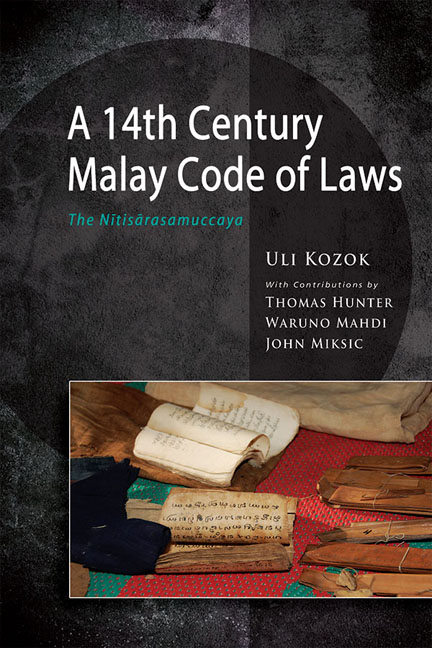Book contents
- Frontmatter
- Contents
- List of Tables
- List of Figures
- Abbreviations
- Preface
- About the Contributors
- 1 Pusaka: Kerinci Manuscripts
- 2 Kerinci and the Ancient History of Jambi
- 3 Tanjung Tanah Manuscript TK 214
- 4 Script and Language of the Tanjung Tanah Manuscript
- 5 Tanjung Tanah Manuscript TK 215
- 6 Sanskrit in a Distant Land: The Sanskritized Sections
- Bibliography
- Index
- Nalanda-Sriwijaya Series
- Images of TK 214
2 - Kerinci and the Ancient History of Jambi
Published online by Cambridge University Press: 19 May 2017
- Frontmatter
- Contents
- List of Tables
- List of Figures
- Abbreviations
- Preface
- About the Contributors
- 1 Pusaka: Kerinci Manuscripts
- 2 Kerinci and the Ancient History of Jambi
- 3 Tanjung Tanah Manuscript TK 214
- 4 Script and Language of the Tanjung Tanah Manuscript
- 5 Tanjung Tanah Manuscript TK 215
- 6 Sanskrit in a Distant Land: The Sanskritized Sections
- Bibliography
- Index
- Nalanda-Sriwijaya Series
- Images of TK 214
Summary
The manuscript known as TK 214 found at the village of Tanjung Tanah, Kabupaten (Regency) Kerinci, Jambi Province, has been convincingly dated to the second half of the fourteenth century. The manuscript provides a new and extremely important type of information about ancient Indonesian civilization in general. It is equally significant for efforts to reconstruct the cultural history of the region from which it originates. Kerinci is rather remote from most of Sumatra's twenty-first century centres of population, cultural development, and political power, which are mainly situated along major rivers in the lowland plains, but in ancient times (i.e. before 1500) the distribution of these centres was reversed: most of them were located in fertile highland valleys near mountain lakes. Kerinci was one of them. Other important early historic cultural centres flourished at Lake Ranau in Lampung, on the Pasemah plateau of South Sumatra, in the Rejang Lebong valley of Bengkulu, in the three valleys or Luak nan Tigo of the Minangkabau highlands, and in the vicinity of Lake Toba.
Kerinci's environment is propitious for farming: resources include plentiful water including a large lake (the surface of Lake Kerinci is 783 metres above sea level), rich volcanic soil provided by Mt. Kerinci, minerals, and a healthy cool climate free from lowland tropical diseases such as malaria. Kerinci is connected via the lake's outlet the Merangin River to the Batang Hari river system, the eastern lowlands of Jambi, and the Straits of Melaka. The Batang Hari is the second largest river system in Sumatra, covering 40,000 square kilometres (the Musi River's drainage in South Sumatra covers 61,000 square kilometres) (Bezermer 1921, pp. 528–30). Kerinci's volcano provides rich soil for the Batang Hari's upper tributaries, but the benefits of these do not reach the lowlands of Jambi Province; “the lands of Lower Djambi are poor or bad” (Mohr 1944, p. 437).
Kerinci has long been connected to both the east and west coasts, and to northern and southern mountain valleys, by footpaths (Hoop 1938, p. 200). One of the main sources of Kerinci's importance was its gold, the exploitation of which has traditionally been supervised by local chiefs. In the seventeenth century, Kerinci gold was exported to the British station in Bengkulu, several hundred kilometres to the south.
- Type
- Chapter
- Information
- A 14th Century Malay Code of LawsThe Nitisarasamuccaya, pp. 17 - 49Publisher: ISEAS–Yusof Ishak InstitutePrint publication year: 2015

